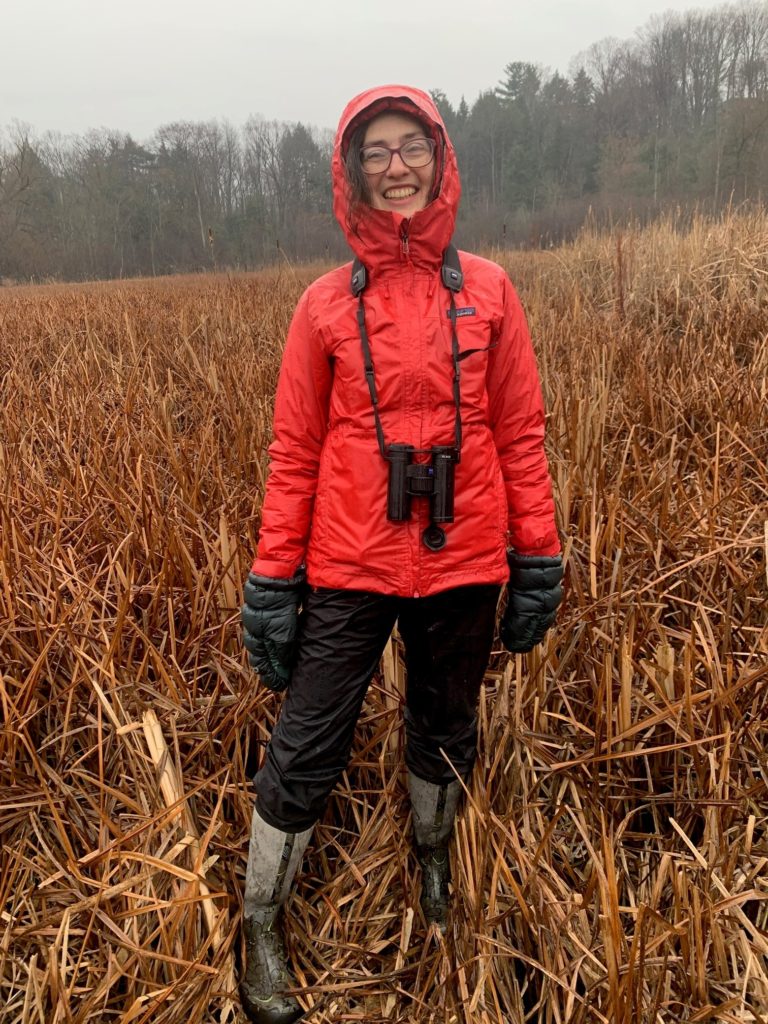A few weeks ago, I was invited to participate in a duck count. I was excited because what’s not to love in a duck count? Especially on the shores of Lake Ontario, where we can easily count 25+ species in a day. For me, ducks were one of the great revelations of birding: I had never imagined such diversity, and such a fabulous color palette. From the elegant Canvasback to the multicolored Wood Duck that looks like I was hand-painted, ducks are what I look forward to after the excitement of fall migration. Ducks are what make winter palatable for me.
But the day of the count, the weather was dismal. Grey, dreary, damp. The last thing I felt like doing at 7:15 am was hopping into my car and counting ducks for hours. What was the point? What was the point of doing anything in such depressing weather? In the end, the only thing that forced me out of the house was the fact that I had invited a friend to join the count and, well, I couldn’t exactly leave her to fend for herself.
I arrived to meet the other duck counters—including my friend—in a mood that matched the weather. And there they were, all seven of them, decked out in waterproof gear from head to toe, spotting scopes resting on their shoulders, smiling, and completely excited to begin the day. I remembered the expression, fake it till you make it, and smiled in return. Normally nothing makes me happier than mid-winter waterfowl, but that particular day I wasn’t feeling it.
Then we started counting. A group of 125 Red-breasted Mergansers flew overhead, stunning Long-tailed Ducks and Common Goldeneye glided along, performing a requisite two-step maneuver when an oncoming wave demanded it. Just beyond, in the storm-water pond, we saw six Northern Shovelers—five juvenile males and one female—all spinning in a circle, as if they’d taken lessons from a phalarope. They had likely found some plankton or seeds, which they would then sift through their shovel-like bill, but we stood there comparing the juvenile male and female plumages, surprised by the deep orange of their feet, and trying to figure out what these fantastically bizarre ducks were thinking as they danced in a circle at breakneck speed.


As we stood there, I noticed my mood shift. The weather hadn’t improved in the slightest—if anything, the sky turned an even more ominous shade of grey, and the sliver of sun that threatened an appearance had now retreated definitively. But suddenly, I was immersed in the moment, absolutely engrossed in bird identification, in the beauty of these strangely wonderful looking ducks, marveling at how they endured both the frenetic waves and freezing temperatures. The more I looked at birds closely, the more I noticed the grey on the horizon taking on different hues, and start to transform in front of me as I began to pay attention to the nuance of the muted tones of mid-winter. It was still damp and cold, but nothing about the day felt dreary and depressing.
Again and again, birds lift me up. Not only do they improve my mood, but they force me out of my own head and remind me of the beauty and wonder around me.
It’s no surprise that scientific studies now link exposure to birds (and nature in general) with improved wellbeing and happiness. I’ve experience firsthand how birds encourage us to focus on the present moment, but they also keep us humble and awaken a sense of curiosity about the world around us. And when you’re curious, engaged, and fully present you can’t help but notice your mood lighten as the world around you becomes more fully alive, no matter how grey it might appear on the outside.
